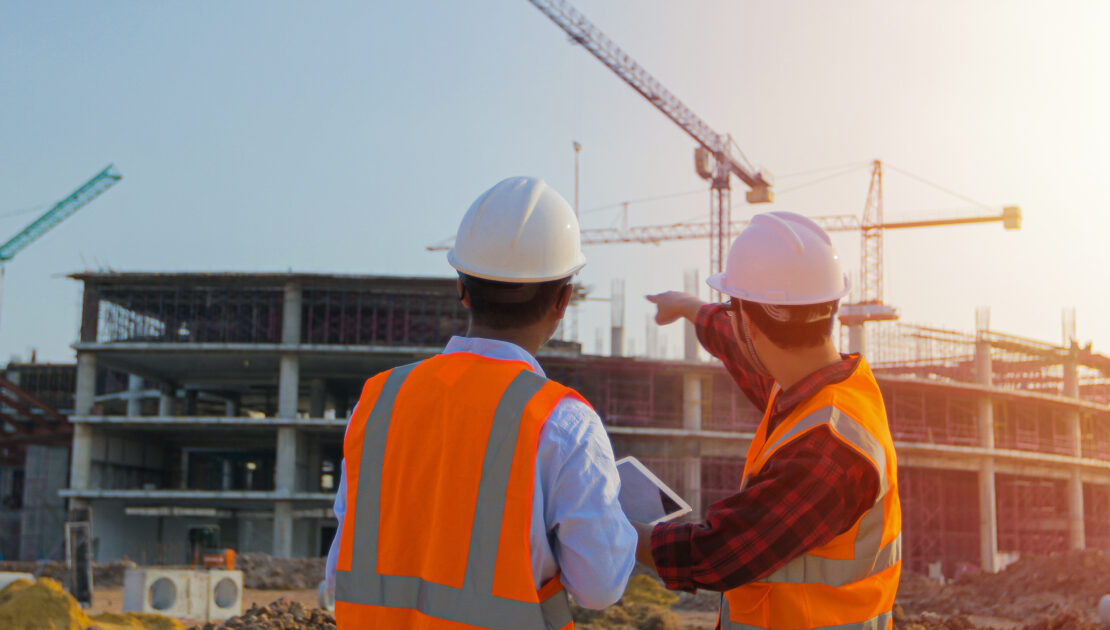How Technology is Helping Lower Risks in Construction

Construction projects are becoming more complex, while the timeframes to complete them are shortening. On top of these challenges, supply chain troubles and labor shortages are raising the potential risks for builders, insurance industry sources tell PropertyCasualty360.com.
“Each of these factors can increase business expenses and insurance rates, which underscores why it’s more important than ever for contractors to manage their risks, reduce incidents and remain safety conscious,” says Michael Teng, assistant vice president of regional products, pricing, and underwriting for Sentry Insurance. “Technology has an opportunity to help contractors improve safety — but only if it’s used effectively and leads to better loss results over time.”
Of course, COVID also played a role in further aggravating current construction challenges, reports Randy Dombrowski, a safety services manager at Sentry Insurance.
“Some smaller subcontractors weren’t able to endure COVID disruptions and labor shortages in recent years,” Dombrowski tells PropertyCasualty360.com. “General contractors will face added pressure as they either take on more project responsibilities or establish relationships with new subcontractors, which comes with its own set of risks.”
Concerning supply chain challenges, Mark Nowakowski, assistant vice president, risk control field director, for The Travelers Indemnity Co., says software solutions are available to manage submittals and overall project documentation.
For example, with Procore software “builders can have really good insights as to what is coming to a project, what they currently have, delivery schedules and delays,” he adds.
Equally important to getting materials to a site is protecting the assets a construction firm already has on the ground, according to Nowakowski.
“We love when our contractors are managing what they do have through theft prevention on the project. It is one thing to not have it on site, but it is different to have it and then have it stolen from site.”
To this end, motion sensors and lighting can play a big role. Additionally, some systems feature cameras that give site superintendents visibility on the activity at a job site.
“Safety inspection software is also a growing technology we see clients using, making sure folks in the field are working as safely as possible” Nowakowski says.
These digital tools include wearable devices and ergonomic AI technology, which evaluates a workplace and provides recommendations for improvements that can reduce the risk of injuries and related costs, Nowakowski explains.
Lawrence Barone, a senior safety services consultant at Sentry Insurance, gave sensing devices that monitor oxygen levels and hazardous atmospheres as an example of wearable technology being deployed on projects.
“Jobsites should have an attendant paying attention to workers in confined spaces, however, the sensors can add an extra layer of safety by sending alerts,” Barone adds.
According to Al Paniagua, senior safety services consultant at Sentry Insurance, building information modeling (BIM) systems is also helping contractors identify and reduce potential project risks by recreating the environment in a digital realm.
“Building information modeling helps contractors run into potential hazards virtually before they run into them realistically,” Paniagua says. “If you can visualize property or worker risks in advance, you can incorporate the proper controls to operate more safely throughout the design, planning and construction process.”
Barone explains safety technology is much like any other investment, requiring further outlays to maintain it and train staff to use it.
“Technology can enhance your risk management efforts, but you need to understand the overall investment and you need to have the skill set within your company to use it properly,” he tells PropertyCasualty360.com. “If you’re able to make the long-term investment and provide ongoing training to your team, technology can help make jobs simpler, safer and more effective. But you need to understand the human elements that go into using technology effectively.”
Similar to BIM, some businesses are taking advantage of immersive reality to get a better assessment of a project’s risks through 3D and 4D models, according to Barone.
However, Dombrowski cautions that technology alone cannot improve job site safety, but it is a powerful tool that can help supplement workplace safety efforts.
“Every construction business has its own unique risk profile — and therefore different technology needs,” he says. “The one constant across all job sites should be building and maintaining a consistent safety culture.”
Source – Propcasualty360.com
